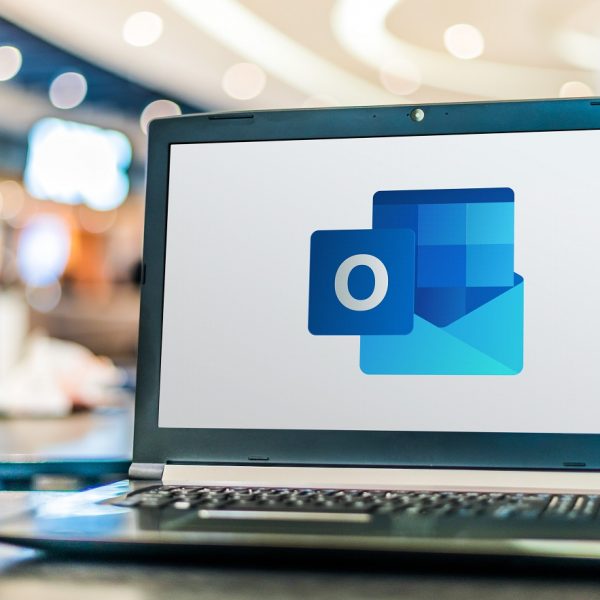Free Digital Literacy Tools Available Online

In 2022, if you want to stay informed and connected to the outside world, being digitally literate is essential. This is especially true for those who are still participating in the work force, as most job opportunities, work environments, and means of companywide communication is online. And while Neil Squire offers free digital literacy training for persons with disabilities, there are also other free options available right now that shouldn’t be ignored. These resources are well-crafted, searchable, and have been used by millions of users.
Be More Efficient with Outlook

If you’re using the internet in 2022, chances are you’ve already heard of Microsoft’s email platform (and successor to Hotmail), Outlook. The platform is quick, efficient, and easy to use, and generally does everything an email service should. Plus, the Outlook is especially helpful for anyone who operates within the Microsoft/Microsoft 365 environment, because of how well it integrates with the other apps under that umbrella such as Teams. Today, we’re going to look at a few tips, tricks, and interesting features that not every Outlook user may be aware of. Hopefully even veteran users will learn something new today!
Which Cloud Service is Right for You?

Do you find yourself often running out of hard drive space? Have you noticed that your computer has begun to slow down significantly after owning it for a couple of years? Taking advantage of free, cloud-based storage is a great way to maximize your overall digital storage potential, and to prevent you from having to spend money on a bigger hard drive, USB sticks, external hard drives, etc. That being said, you may have noticed that there are quite a few options to choose from! In an effort to better understand these options, we’re going to compare and contrast the top four cloud-based services available today.
Do More with Microsoft Teams

Within a relatively short period of time Microsoft Teams has seen widespread adoption across schools, business, and groups across the globe, and for good reason. The platform is free, easy-to-use, and offers plenty of accessibility features for individuals across a wide spectrum of backgrounds, learning styles, and abilities. And while the app does a great job of pointing users to its many useful features, there is so much to explore within Teams that we thought we’d create a list of some tips and features for Microsoft Teams that you may not know about.
Folder Management for iOS

Last week we looked at folder management for Android and explored how to create new folders, how to manage them, and, how to locate files and folders that have already been created. Today, we’re going to look at the same functions, but in the context of iOS devices including iPad and iPhone.
Folder Management for Android

Have you ever downloaded a document onto your Android tablet only to have it seemingly disappear into the electronic void? Have you ever wondered if there’s an easier, more efficient way to deal with folders? If you answered yes to either of these questions, then this guide is for you. We’re going to look at the two major mobile platforms and dive a bit deeper into their respective file management systems in order to gain a better understanding of how to better utilize the storage potential of these devices. This will be a two-part guide, with this week’s e-bulletin focusing on Android tablets.
How to Set up and Manage Email for Windows 10

Email has been the primary communication tool among employees for some time, and even with the introduction of newer technology such as Zoom or Teams, email is not going anywhere anytime soon. But even though email has been around for decades at this point, not everyone knows how to use it to its full potential. So if you’re someone who still uses their browser for checking emails, then this lesson is for you!
Five Navigation and Transportation Apps for Persons with Disabilities

When you have physical disabilities, dealing with transportation and navigation in your area can be a major challenge. This is especially true for wheelchair users who tend to have specific requirements regarding the environments in which they are able to comfortably access. Today, we’re going to look at five apps designed to help users with physical disabilities to more easily navigate their surroundings. These apps could be helpful for a wide range of disabled users, and many of these apps could also be helpful for persons with intellectual disabilities who might benefit from the extra guidance that they provide.
A Student’s Guide to Google Workspace

Today, we’re going to do a quick overview of the free apps that are available to students through Google Workspace. These apps are well designed with accessibility in mind, they’re free, and each app is designed to be used from anywhere, on any device. This is why the Google Workspace (formerly known as G-Suite) is a great choice for post-secondary students. Unlike primary-school aged children who often get free access to Microsoft 365, college and university students can’t always afford premium technology. So without further ado, let’s dive into the apps that are currently available for free through Google Workspace.
Five Tools for Easy Cover Letter and Resume Creation

Learning to create an effective cover letter is crucial for anyone entering into the workforce. Unfortunately, this is not always taught in a classroom environment, even though there is a very particular structure that is expected. If you want to catch the eye of a potential employer, your cover letter has to be well-structured, well-designed, and attractive.



